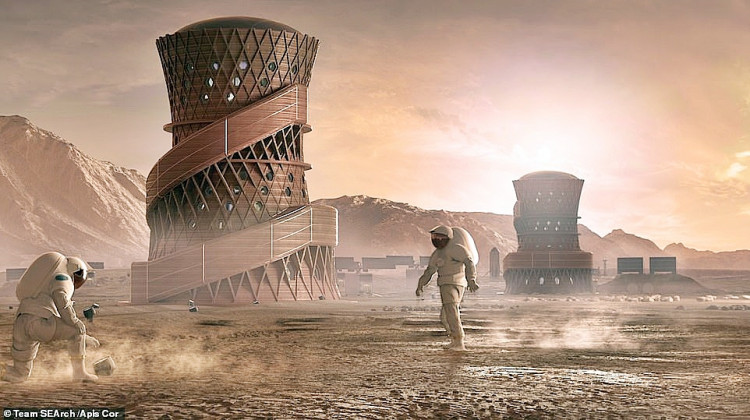Current U.S. plans call for building habitats on Mars even before the first humans land on this inhospitable and potentially lethal planet by the 2030s or 2040s. SpaceX founder Elon Musk is thinking along this line and intends to have the first flights of his massive Starship rocket take building materials to the Red Planet where robots or 3D printers will assemble these habitats.
Along with this line, NASA recently announced three finalists in its ongoing "3D-Printed Habitat Challenge" design competition. This contest challenges engineers and architects to design sustainable dwellings that can be 3D printed on Mars.
The finalists are SEArch+/Apis Cor from New York City, which took first place; Zopherus from Arkansas that placed second, and Mars Incubator from Connecticut that took third place. They shared a $100,000 prize.
SEArch+/Apis Cor developed a unique twisted structure dotted with small holes to allow the entry of natural sunlight. Zoperhous intends its modular structures be 3D printed by an autonomous rover. The engineers and artists at Mars Incubator showed-off a modular design consisting of four distinct spaces, including one for growing plants.
The three finalists, which were part of an initial group of 11 candidates, were rated based on "architectural layout, programming, efficient use of interior space, and the 3D-printing scalability and constructability of the habitat," said NASA.
NASA said the next step in the competition will see these three finalists compete in a showdown with a prize of $800,000. The final phase will take place in early May.
The challenge began in 2015 and has seen teams vying to design shelters suitable for the Moon, Mars and beyond. In the recently ended competition phase, 11 teams were challenged to craft full-scale renderings of their designs using modeling software. They were also asked to make short videos explaining their choices.
The competition supports NASA's mission to return humans to the Moon and, eventually, to Mars. Last November, NASA announced nine U.S. companies are eligible to bid on $2.6 billion in contracts over the next 10 years to deliver services to the Moon. The federal government's Space Policy Directive 1 will "refocus America's space program on human exploration and discovery."
Space Policy Directive 1 is a first step in returning American astronauts to the Moon for the first time since 1972 for long-term exploration. The U.S. will establish a foundation for an eventual mission to Mars, and to other worlds.






